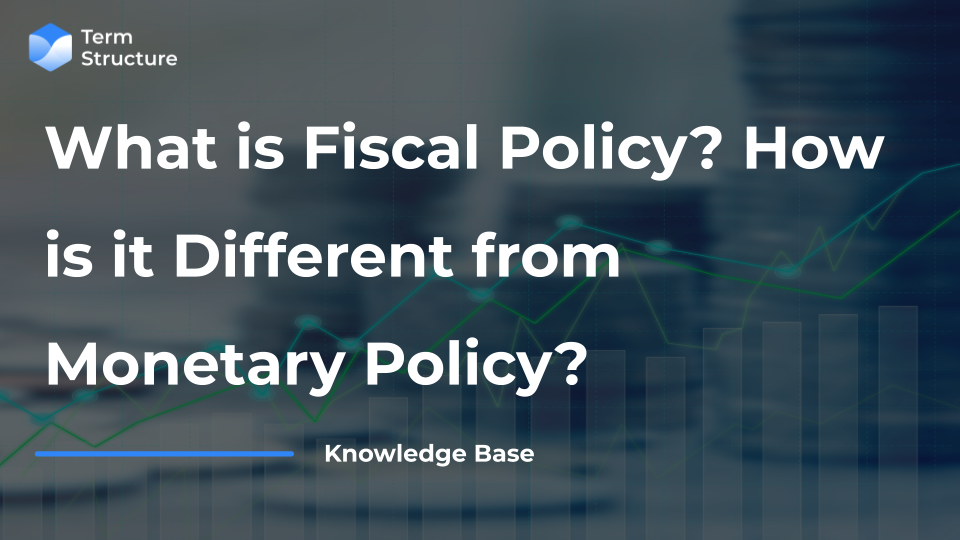What is Fiscal Policy? How is it Different from Monetary Policy?

Understanding Fiscal and Monetary Policy
Fiscal and monetary policies are essential tools used by governments and central banks to manage and stabilize economies. They share the common goal of promoting economic health but differ significantly in their approaches.
Fiscal Policy
Fiscal policy refers to the use of government spending and taxation to influence the economy. The primary objective of fiscal policy is to achieve certain macroeconomic goals such as economic growth, price stability, and full employment. Governments use fiscal policy tools to stimulate or slow down economic activity based on prevailing economic conditions. These tools include:
- Government spending: Increasing or decreasing government spending on goods and services. Increased government spending can stimulate economic activity by creating demand for goods and services and providing employment opportunities. Decreased government spending can help reduce budget deficits and control inflation.
- Taxation: Adjusting tax rates or implementing new taxes to influence consumer and business behavior. Tax cuts can increase disposable income and stimulate consumption and investment, thereby boosting economic growth. Tax hikes can help reduce budget deficits or cool down an overheating economy by reducing spending and inflationary pressures.
Fiscal strategies are divided into:
- Expansionary fiscal policy: Implemented during economic downturns or recessions, expansionary fiscal policy involves increasing government spending and/or reducing taxes to stimulate economic growth, create jobs, and increase aggregate demand.
- Contractionary fiscal policy: Implemented during periods of economic expansion or when inflationary pressures are rising, contractionary fiscal policy involves decreasing government spending and/or increasing taxes to slow down economic growth, reduce inflation, and prevent overheating of the economy.
Fiscal policy decisions are typically made by government bodies such as the legislative branch (for example Congress in the United States) and are implemented through the annual budgeting process. However, the effectiveness of fiscal policy can be influenced by factors such as the size of government debt, the structure of the economy, and political considerations.
Monetary Policy
Monetary policy refers to the actions taken by a country's central bank or monetary authority to manage the money supply and influence interest rates to achieve specific macroeconomic goals. The primary objectives of monetary policy typically include stabilizing prices, promoting full employment, and supporting sustainable economic growth. Central banks use various tools to implement monetary policy, including:
- Open market operations / Quantitative Easing & Tightening: Central banks buy and sell government securities (such as Treasury bonds) in the open market to control the money supply. When a central bank purchases government securities, it injects money into the banking system to increase the money supply and lower interest rates. Conversely, when it sells securities, it reduces the money supply, raising interest rates.
- Reserve requirements: Central banks set reserve requirements, which are the minimum percentages of deposits that banks must hold in reserve. By adjusting these requirements, central banks can influence the amount of money banks can lend out, thereby affecting the overall money supply.
- Discount rate: The discount rate is the interest rate at which banks can borrow funds directly from the central bank. By changing the discount rate, central banks can encourage or discourage banks from borrowing. This, in turn, affects the money supply and interest rates in the economy.
- Forward guidance: Central banks provide forward guidance on their future monetary policy intentions to influence market expectations and guide economic behavior. This may include signaling future changes in interest rates or the stance of monetary policy.
Like fiscal policy, monetary policy can be broadly classified into two types:
- Expansionary monetary policy: Also known as loose or accommodative monetary policy, expansionary monetary policy involves increasing the money supply and lowering interest rates to stimulate borrowing, investment, and consumer spending. This is typically done to boost economic growth and reduce unemployment during periods of economic weakness or recession.
- Contractionary monetary policy: Also known as tight or restrictive monetary policy, contractionary monetary policy involves reducing the money supply and raising interest rates to curb inflation and slow down economic growth. This is usually implemented when inflationary pressures are high or the economy is overheating.
Monetary policy decisions are made by the central bank's monetary policy committee or board, which typically operates independently of the government to ensure the effectiveness and credibility of monetary policy. However, central banks often coordinate with government fiscal policy to achieve overall macroeconomic stability.
